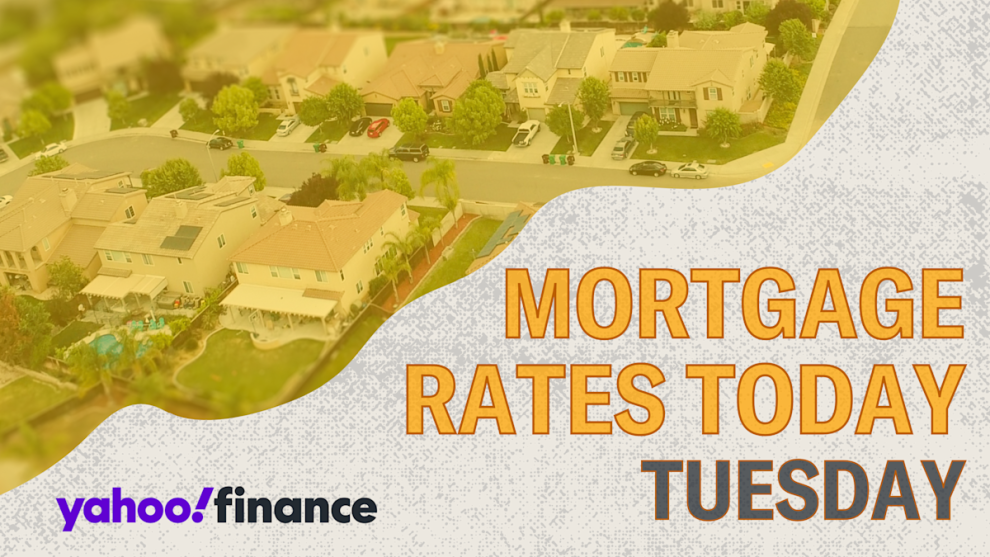Most mortgage rates have increased today. According to Zillow, the 30-year fixed mortgage rate has risen by five basis points to 6.75%, and the 15-year fixed interest rate is up four basis points to 5.99%.
Rates are probably inching up as economists await the Federal Reserve’s announcement about cutting the federal funds rate tomorrow. Few people expect the Fed to lower its rate at this meeting, and rates could stay steady or even tick up after the meeting. However, mortgage rates could decrease if Federal Reserve Chair Jerome Powell indicates the Fed will be more aggressive about slashing rates later in the year.
Dig deeper: How the Federal Reserve rate decision impacts mortgage rates
Here are the current mortgage rates, according to our latest Zillow data:
-
30-year fixed: 6.75%
-
20-year fixed: 6.43%
-
15-year fixed: 5.99%
-
5/1 ARM: 7.04%
-
7/1 ARM: 7.37%
-
30-year VA: 6.32%
-
15-year VA: 5.71%
-
5/1 VA: 6.29%
Remember that these are the national averages and rounded to the nearest hundredth.
Have questions about buying, owning, or selling a house? Submit your question to Yahoo’s panel of Realtors using this Google form.
These are the current mortgage refinance rates, according to the latest Zillow data:
-
30-year fixed: 6.81%
-
20-year fixed: 6.41%
-
15-year fixed: 6.01%
-
5/1 ARM: 7.34%
-
7/1 ARM: 7.38%
-
30-year VA: 6.28%
-
15-year VA: 5.87%
-
5/1 VA: 6.48%
Again, the numbers provided are national averages rounded to the nearest hundredth. Refinance rates are usually higher than purchase rates.
A mortgage calculator can help you see how various mortgage term lengths and interest rates will affect your monthly payments. Use this mortgage calculator to play around with different outcomes.
The Yahoo Finance mortgage calculator also considers factors like property taxes and homeowners insurance when calculating your estimated monthly mortgage payment. This gives you a better idea of your total monthly payment than if you just looked at mortgage principal and interest.
As a rule of thumb, 15-year mortgage rates are lower than 30-year mortgage rates. When comparing 15- versus 30-year mortgage rates, know that the shorter term will save you money on interest in the long run. However, your monthly payments will be higher because you’re paying off the same loan amount in half the time.
For example, with a $400,000 mortgage with a 30-year term and a 6.75% rate, you’ll make a monthly payment of about $2,594 toward your mortgage principal and interest. As interest accumulates over decades, you’ll end up paying $533,981 in interest.
If you get a $400,000 15-year mortgage with a 5.99% rate, you’ll pay about $3,373 monthly toward your principal and interest. However, you’ll only pay $207,188 in interest over the years.
If that 15-year mortgage monthly payment is too high, remember you can always make extra mortgage payments on your 30-year loan to pay off your mortgage faster and ultimately pay less interest.
With a fixed-rate mortgage, your rate is locked in from day one. However, you will get a new rate if you refinance your mortgage.
An adjustable-rate mortgage keeps your rate the same for a set period of time. Then the rate will go up or down depending on several factors, such as the economy and the maximum amount your rate can change according to your contract. For example, with a 7/1 ARM, your rate would be locked in for the first seven years, then change every year for the remainder of your term.
Adjustable rates sometimes start lower than fixed rates, but once the initial rate-lock period ends, you risk your interest rate going up. ARM rates have also been starting higher than fixed rates recently, so they’re not as good of a deal as usual.
Dig deeper: Adjustable-rate vs. fixed-rate mortgage — Which should you choose?
Economists don’t expect drastic rate drops before the end of 2025.
In 2024, mortgage rates trended downward from early August to the Sept. 18 Federal Reserve meeting, when the central bank announced a 50-basis-point slash to the federal funds rate. Since that announcement, mortgage rates have mostly increased or held steady.
The Fed decreased its rate again at its November and December meetings (by 25bps each time). The trajectory of future mortgage rates will largely depend on the Federal Reserve’s decision on whether or not to cut the federal funds rate at its 2025 meetings.
The Fed decided not to cut the fed funds rate at its January or March meetings. According to the CME FedWatch tool, there’s about an 96% chance that the rate will also remain unchanged at the Fed’s meeting tomorrow. This means rates probably won’t significantly drop in the next couple of months.
Dig deeper: Understanding the Fed’s rate decisions — Do we want high or low interest rates?
According to Zillow data, today’s 30-year fixed rate is 6.75% for home purchases and 6.81% for refinances. These are the national averages, so keep in mind the average in your state or city could be different. Your rate will also vary depending on your personal finances.
Mortgage rates will probably be slightly lower by the end of 2025, but they’re unlikely to nosedive anytime soon.
Mortgage rates should go down in 2025, though probably not as drastically as many expected a few months ago. Depending on the economy, inflation, and the Fed, any decreases may be relatively small.










Add Comment